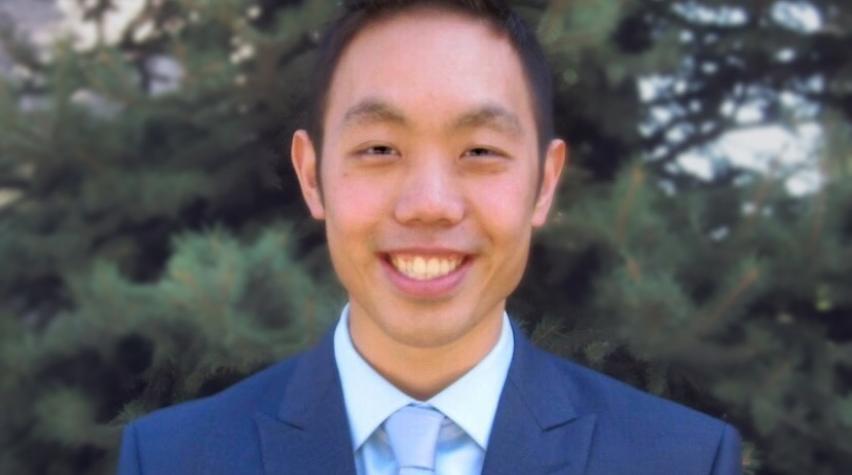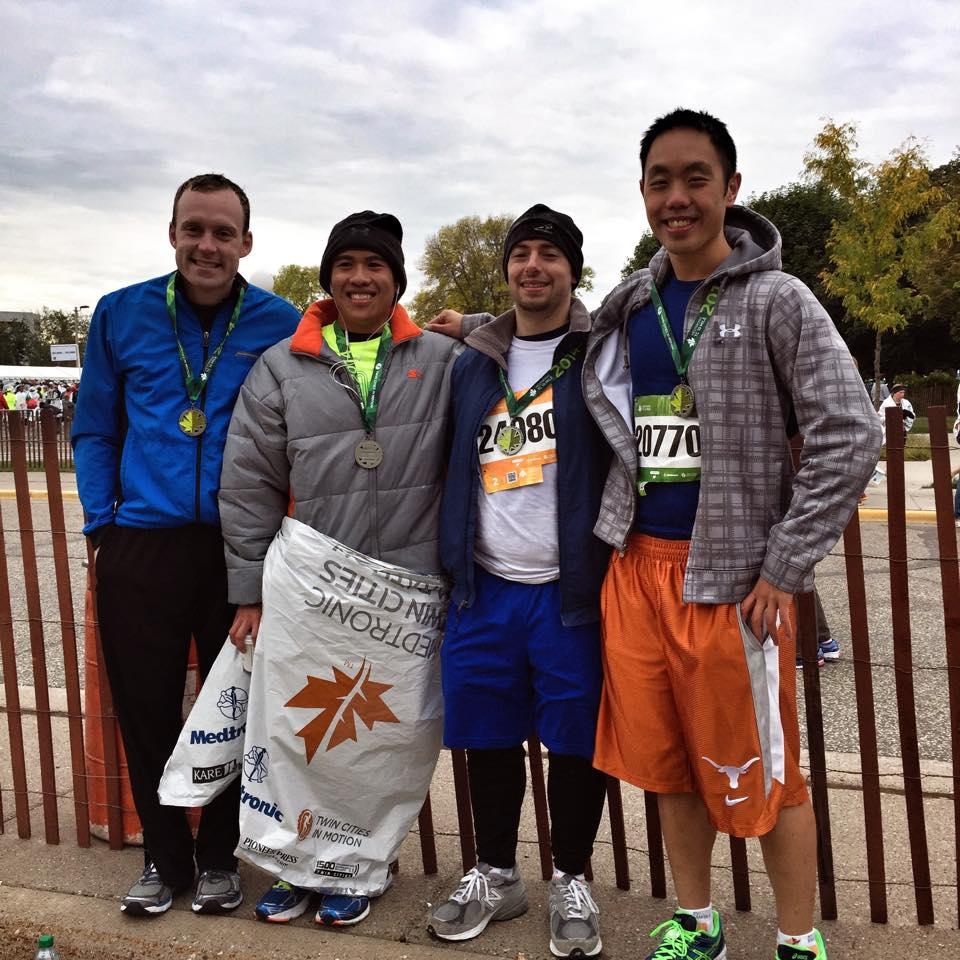
Innovative and exciting research is being performed each and every day by graduate students across the globe in all walks of chemical engineering. This post is a part of the Graduate Research Spotlight Series, which seeks to highlight some of the research being performed by AIChE's graduate student members. If you know of an AIChE member who is currently performing outstanding graduate research and has recently published a first-author paper, please let us know at ypc@aiche.org.
Where are you from?
Brea, CA
What university are you completing your graduate degree at?
University of Minnesota
What field/program are you enrolled in?
Chemical engineering
What type of degree are you getting?
PhD
Where did you receive your undergraduate degree?
The University of Texas at Austin
What was your undergraduate major?
Chemical engineering
How many years have you been a member of AIChE? *
2
In layman’s terms please describe your specific field and what impact it may have on society.
Oral drug administration is the most common drug delivery method, responsible for transformative and readily available medicines over the past decade to treat both infectious and chronic diseases (such as diabetes, hypertension, and HIV) in developing and developed countries alike. The commercial success of bringing such non-invasive drugs to global healthcare markets has driven tremendous interest to increase the pace of discovering new drug molecules. Towards this goal, the pharmaceutical field has directly integrated powerful high-throughput screening and combinatorial chemistry capabilities to rapidly examine millions of drug-like compounds and identify promising candidates.
Unfortunately, the investment in enormous drug screening has not increased the rate of federal approval of new drugs. This is due to the problematic nature of drug molecules themselves during storage and delivery — particularly for oral drug delivery. Here, poor water solubility limits effective transport of drugs across the gastrointestinal tract to reach systemic circulation.
In response, researchers have employed many imaginative drug delivery vehicles to bind, protect, and release drugs and therapeutics in a controllable manner. Many strategies involve the use of polymers, or long chain-like molecules composed of many repeating parts. Polymers are extremely versatile materials, whose microstructure and properties can be precisely changed depending on the selection of repeating units and the way they are bound together. For oral drug delivery, more sophisticated polymer designs with well-defined molecular understanding to better solubilize various drugs offer new opportunities to safeguard public health and combat diseases worldwide.

What is the title of your recently published research article?
Deconstructing HPMCAS: Excipient Design to Tailor Polymer–Drug Interactions for Oral Drug Delivery (article available here.)
Describe the highlights of your recently published paper.
Synthetic polymers have potential to improve the efficiency and safety of oral drugs that may be otherwise clinically inaccessible. In this work, we present a rational strategy to study polymer-drug interactions in solid dispersions, inspired by hydroxypropyl methyl cellulose acetate succinate (HPMCAS, a popular but heterogeneous polymer candidate for drug solubilization). Solid dispersions are solid-solid mixtures that aim to keep drugs in an amorphous state; as a result, the drugs upon release can create high supersaturation and elevate the apparent solubility of drugs by orders of magnitude. In our work, we use HPMCAS to create simplified polymer analogs and construct mechanistic understanding to guide future drug formulation principles.
First, we prepared new well-defined polymers with a controlled polymerization technique. This allowed us to govern physical parameters (such as molecular weight uniformity and functional group incorporation) and link them to specific drug storage and release attributes.
Next, the polymers were incorporated into solid dispersions for three model hydrophobic drugs. These classes of drugs were chosen because they represent the diverse pool of compounds that are encountered during the drug discovery stage. Samples at various drug dosages were successfully prepared and analyzed by complementary techniques.
Finally, we studied the drug release of each system in physiologically relevant conditions. Distinct performances were observed, and concrete structure-property relationships were established. For instance, the polymer containing succinoyl and acetyl functional groups increased the apparent bioavailability by an order of magnitude relative to the pure drug. Altogether, this approach is very promising in addressing the solubility problem for the majority of new drugs. Furthermore, incorporating the advantageous properties of HPMCAS with compatible molecular building blocks to personalize polymer design can bring revolutionary new medicines past clinical trials to market.
To learn more, see Jeffrey's recently published article.
What are your plans after completing your graduate degree?
Upon graduation, I plan on applying for a postdoctoral position to expand my current skill set. My ultimate professional goals are to secure a faculty position, conduct exciting research, and mentor future scientists and engineers to make a visible difference in this world.
What motivated you to pursue your graduate work?
For my undergraduate research experiences in the Willson group at Texas and The Molecular Foundry at Berkeley Lab, I was given the incredible opportunity to work in laboratory settings with exceptionally talented colleagues, mentors, and friends.
Back then and even today, my inspiration for pursuing my doctoral degree resonates their excitement, creativity, and relentlessness in pushing scientific boundaries and transforming ideas into tangible applications. Reflecting on what I have learned over the past four years, I believe that success in graduate school can be measured by (1) the quality of knowledge that is produced and articulated to others, and (2) building a network of bright people with diverse strengths and skillsets to solve pressing challenges in the world.
What is your favorite moment in chemical engineering history?
That is the game-changing work of Neal Amundson. In the words of my advisor Frank Bates, he changed the ChE field from "glorified plumbing" to a "rigorous discipline" with math-driven principles.
If you weren’t a ChE what would you most want to be?
I would probably be a graphic designer. In my free time, I love to draw and design graphics to convey stories.
Do you have any advice for current or future graduate students reading ChEnected?
Graduate school is a very unique place. In my experience, it has been marked with exhilarating highs and tedious lows. Oftentimes, the work is mundane and systematic; other times, it is incredibly fun! But at the end of the day, keeping the big picture in mind has always driven me to press on.
Theodore Roosevelt once said, "Far and away the best prize that life has to offer is the chance to work hard at work worth doing." I have been lucky enough to stumble into a field of research where I feel my contributions in pushing the boundaries of science and engineering have meaning through support from my academic family and friends.
For any prospective or new graduate student, I would say to keep an open mind to all the incredible, active areas of research at your institution. But moreover, maintain prospective of your dreams and ambitions, put in the hard work, and enjoy the challenges and rewards of graduate study.
You can reach Jeffrey through his LinkedIn profile and see more about his other work on his Google Scholar profile.


